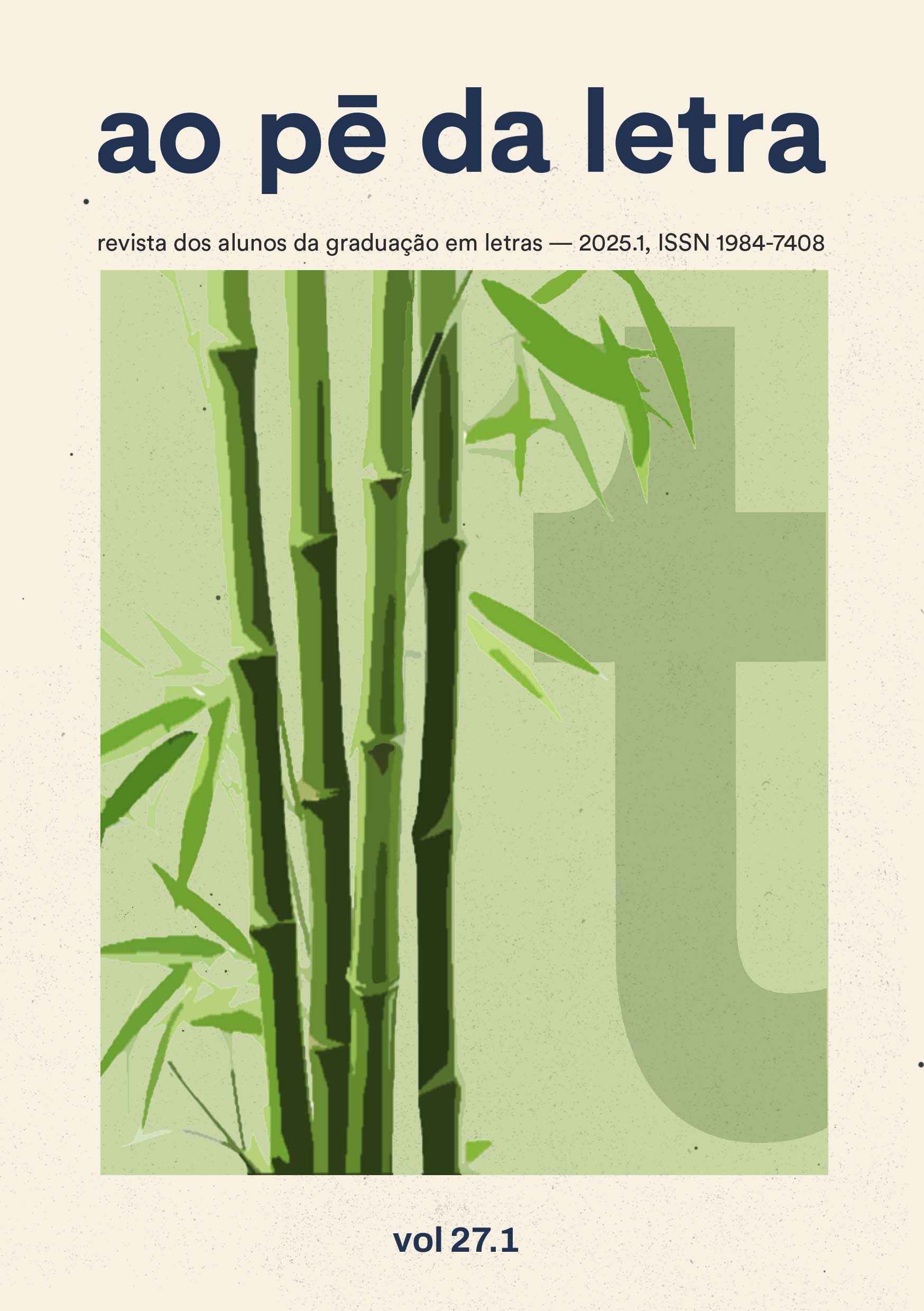Two Views on Melancholy on The Moon and the Bonfires, by Cesare Pavese
DOI:
https://doi.org/10.51359/1984-7408.2025.266401Keywords:
Cesare Pavese, Italian Literature, Exile, Melancholy, Progressive FolkloreAbstract
This article aims to present two views on melancholy in Pavese’s novel The Moon and the Bonfires, whose main characters are Eel, an unnamed narrator who spends half his life in exile abroad, and Nuto, his best childhood friend who has put down roots in the town where he was born. The objective is to draw a contrast between these two characters, which will allow us to discuss the place of exile and rootedness in the provinces of post-war Italy in the 20th century, as well as their views on “survivals” (Didi-Huberman’s concept) and their melancholic stance. To this end, the following works will be brought up for discussion: The Need for Roots, by Simone Weil, Survival of Fireflies and Écorces by Didi-Huberman, the proposition and the defense of a “Progressive Folklore”, by Ernesto De Martino, and the ideas of Jean Starobinski in his book L’Encre de la mélancolie. In general terms, the goal is to expand the possibilities of reading The Moon and the Bonfires in order to problematize the dichotomies between village and city, primitive and civilized.
References
BENJAMIN, Walter. Magia e técnica, arte e política: ensaios sobre literatura e história da cultura. Tradução de Sérgio Paulo Rouanet. 8. ed. revista. São Paulo: Brasiliense, 2012.
BRODSKY, Joseph. Sobre o exílio. Tradução de André Bezamat e Denise Bottmann. Belo Horizonte: Editora Âyine, 2022.
BUCK-MORSS, Susan. Estética e anestética: uma reconsideração de A obra de arte de Walter Benjamin. Travessia, Ilha de Santa Catarina, n. 33, p. 11-41, ago.-dez. 1996. Disponível em: https://periodicos.ufsc.br/index.php/travessia/issue/view/1542. Acesso em 20 ago. 2025.
CALVINO, Italo. Por que ler os clássicos. Tradução de Nilson Moulin. São Paulo: Companhia das Letras, 2007.
DE MARTINO, Ernesto. El folclore progresivo y otros ensayos. Tradução de Carles Feixa. Barcelona: Museu d’Art Contemporani de Barcelona y Servei de Publicacions de la Universität Autónoma de Barcelona, 2008.
DIDI-HUBERMAN, Georges. A sobrevivência dos vaga-lumes. Tradução de Vera Casa Nova e Márcia Arbex. Belo Horizonte: Editora UFMG, 2011.
DIDI-HUBERMAN, Georges. Cascas. Tradução de André Telles. São Paulo: Editora 34, 2017.
FOUCAULT, Michel. O corpo utópico, as heterotopias. Tradução Salma Tannus Muchail. São Paulo: n-1 Edições, 2013.
GINZBURG, Jaime. Literatura, violência e melancolia. Campinas: Autores Associados, 2013.
PAVESE, Cesare. A lua e as fogueiras. Tradução de Liliana Laganá. São Paulo: Berlendis & Vertecchia, 2002.
SIMMEL, Georg. As grandes cidades e a vida do espírito. Tradução de Leopoldo Waizbort. Revista Mana, Rio de Janeiro, v. 11, n. 2, p. 577-591, 2005. Disponível em: https://www.scielo.br/j/mana/a/WfkbJzPmYNdfNWxpyKpcwWj/?format=pdf&lang=pt. Acesso em: 20 ago. 2025.
STAROBINSKI, Jean. A tinta da melancolia: uma história cultural da tristeza. Tradução de Rosa Freire d’Aguiar. São Paulo: Companhia das Letras, 2016.
VICENTINI, Marzia Terenzi. O neorrealismo italiano. Curitiba: Segesta Editora, 2010.
WEIL, Simone. O enraizamento: prelúdio a uma declaração dos deveres para com o ser humano. Tradução de Clarissa Ribeiro. Petrópolis: Vozes, 2023.
Downloads
Published
Issue
Section
License
Copyright (c) 2025 Autor, concedendo à revista o direito à primeira publicação

This work is licensed under a Creative Commons Attribution 4.0 International License.
Autores que publicam nesta revista concordam com os seguintes termos:
- Autores mantém os direitos autorais e concedem à revista o direito de primeira publicação, com o trabalho simultaneamente licenciado sob a Licença Creative Commons Attribution 4.0 Internacional (CC BY 4.0) que permite o compartilhamento do trabalho com reconhecimento da autoria e publicação inicial nesta revista.
- Autores têm autorização para assumir contratos adicionais separadamente, para distribuição não-exclusiva da versão do trabalho publicada nesta revista (ex.: publicar em repositório institucional ou como capítulo de livro), com reconhecimento de autoria e publicação inicial nesta revista.
- Autores têm permissão e são estimulados a publicar e distribuir seu trabalho online (ex.: em repositórios institucionais ou na sua página pessoal) a qualquer ponto antes ou durante o processo editorial, já que isso pode gerar alterações produtivas, bem como aumentar o impacto e a citação do trabalho publicado (Veja O Efeito do Acesso Livre).

